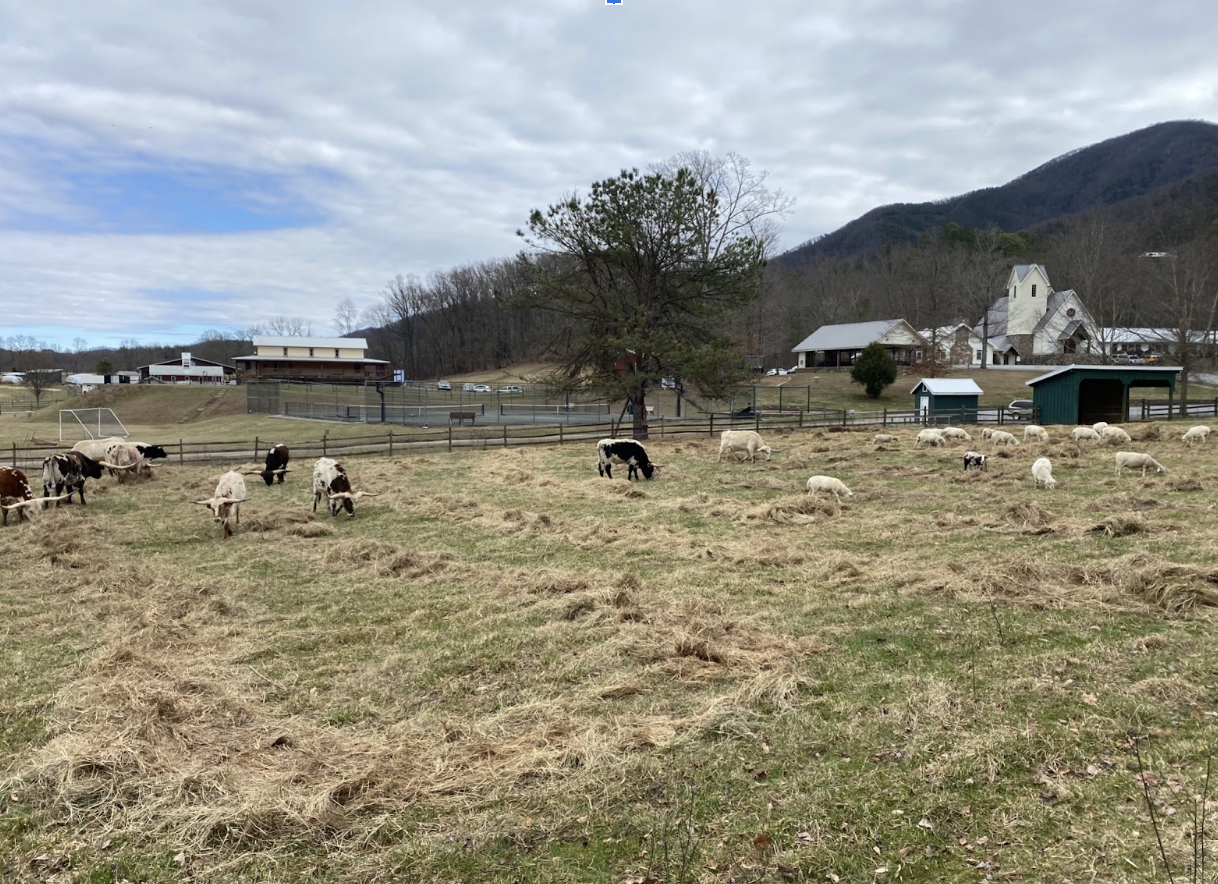From Ryan McCaffrey:
When we say our beef and lamb is grass-fed and grass-finished, we mean it. Even in the winter time, we don’t supplement them with grain. We let them graze as much as they can, managing our fields during the grazing season to try to build stockpiled forage that they can graze in the wintertime and supplementing that with good quality hay. When we buy our hay, we try to buy hay that is at or near horse-quality hay then we store it in one of two smaller sheds or under hay tarps. (If you’d like to help us build a dedicated hay storage barn, please contact us.) Stockpiling forage is a technique where you let fall, cool season forage grow to provide winter grazing. In 2022 we combined our sheep and our cattle together to form a flerd (flock + herd = flerd). This allows the two species to complement each other in their grazing habits while allowing the pastures to get more rest and recovery in between grazings. We also finished fencing on an additional 11 acres of pasture. It will likely be up to 5 years before we see lots of fruit from these changes however, after a very dry 2022 fall, our pastures are doing pretty well under the circumstances and the sheep are finding enough grass on the ground that they’re passing up the hay.
When the time comes to feed hay, we unroll it with a bale unroller that can be pulled by a 4-wheeler or utv to limit the amount of heavy weight and tire ruts on the pastures. Unrolling it in this fashion accomplishes several things. It spreads out the hay to reduce herd dynamics, making sure all the animals from the biggest to the smallest have equal access to as much as they can eat. It also helps spread out the hoof impact from the animals. This is significant in the long, wet winters of east TN. Our animals are not standing knee-deep in mud for months on end through the winter. Unrolling the hay also leaves less hay in one spot. What the animals don’t eat or what gets soiled will break down faster to return to the pasture in the form of usable nutrients and organic matter. Spring grass is able to grow through the litter that’s left behind. By June, you’ll hardly be able to tell where we unrolled hay, if at all. We’re currently (February 2023) continuing to rotate them through our pastures, moving them 2-5 days per week. In the summer it’s 5 days per week. Unrolling winter hay also spreads out the manure and urine distribution of the animals which helps more evenly fertilize our fields.
The picture above was taken in January 2023. We had our cattle and sheep together on a pasture with any plants they could forage for along with 6 mixed grass round bales unrolled on the pasture for them to graze on. We put out 6 because they were a little bit smaller bales and we wanted to make sure they had plenty of hay to get through the weekend. You can see the lines of hay in the picture with grass in between the hay. We moved the animals in there on Friday and since there was still enough hay left for them to clean up on Monday, we moved them out on Tuesday. It got a little muddy around the mineral feeder so we’ll have to come back and throw some seed on that small area. The pasture will rest for around a month before the animals are back into it. Once we get into the grazing season (April-November), the pasture will likely have +/-60 days between grazings.
The benefits of grass-feeding AND grass-finishing our meat are multiple. Besides the benefits to the land, there are significant health benefits for the consumer. Grass-fed beef is known to be lower in total fat, higher in Omega-3 fatty acids, and packed full of vitamins, antioxidants and iron. These things are known to have a number of health benefits including being heart healthy and even helping fight off some health conditions. Here is a good article that explains more: https://www.webmd.com/diet/grass-fed-beef-good-for-you.


